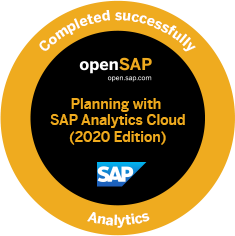SAP has provided the SAP S/4HANA Finance for group reporting in S/4 HANA Finance 1909. SAP S/4HANA Finance for group reporting 1809 uses the SAP S/4HANA universal journal as a single source of truth for SAP company codes (integrated units). For Non-SAP (non-integrated) company codes, you can upload data for consolidation.
SAP S/4HANA Finance for Group Reporting Features for 1909
- Data Collection: Real-time release from SAP S/4HANA accounting, file upload, mapping, application programming interfaces.
- Currency Translation: Cumulative and periodic translation, average / spot / historic rates, rounding rules, carry over group currency from the SAP S/4HANA core.
- Data Validation: Reported (local) data, translated data, consolidated data, master data combinations (a.k.a. Breakdown) checks. Enhanced reporting and data selection.
- Top Side Journal Entries: Direct entry or file upload for topside adjustments.
- Eliminations: Rule-based eliminations driven by master data.
- Consolidation of Investments: Rule-based and activity-based approach for main activities (first consolidation, subsequent consolidation...)
- Reporting: SAP Fiori Analytics, rule-based reports for cash flow or other comprehensive income, drill down to ACDOCA, integration with SAP Analytics Cloud, SAP Analysis for Microsoft Office. Streamlined.
- Planning: Flexible versions, run consolidation on ACDOCP data / SAP Analytics Cloud.
- Restatements: Restatements can be carried out via versions and data copy.
- Data model and master data: Wide data model covering business fields of the universal journal, consolidation-specific master data for non SAP S/4HANA companies and simulation.
- Shared Master data:Group reporting adopts master data from the S/4 HANA Finance, such as cost center, profit center and segments etc.
- Process control: In BPC, you must have known the business process flow, What it is? A sequence of defining processes. Similar to BPF, Group reporting provides two dedicated data monitor and consolidation monitor to execute the business process in a predefined way.
- Management Consolidation: Addition to company consolidation, you can perform management consolidation by profit center, segments etc.
- FS Item Attributes: In BW and BPC we are using attributes and characteristics which help to filter accounts based attributes, this facilitates easy maintenance. Similar to this concept of the SAP group has introduced FS Item attributes.
- Data segregation: To differentiate the category of data, in Group reporting you can see posting level.
- Data Flow: In BPC, you use audit trail to capture different types of data, such as opening balance, movement during the year etc. For income statement items data flow is tracked by functions.
Legacy vs Group Reporting Data Flow
Advantages
- Integration: Seamless integration of local and group data. Local data and consolidation data are two sides of the same coin. Having these data in same system help local accountant and group accountant to see and reconcile data in a continuous process. This ensures a smooth and faster closing process.
- Drilldown capability: Group reporting has the capability to see the source information. From the group reporting line item, you can navigate to a universal journal line item.
- Ensure data consistency: Tight integration between S/4 HANA company and chart of account with consolidation unit and consolidation chart of account ensure reliable data quality.
- Accounting Document: Group reporting inherited with document number what you see in the ERP.
- Common user experiences: For a seamless user experience in S/4 HANA SAP has provided for the app, the same / similar user interface is used for group reporting. This does not bring any radical change to the user experience.
- Single environment: no extra hardware and software cost, but need license fee.
- Simpler data model: S/4 HANA is intended for the simpler data model. Group reporting is designed in the same line. Fewer table and shared master data make it possible
- Less maintenance cost: Due to simpler data model and avoidance of complex application the maintenance of cost of the application is less costly.
- Accelerated Accounting: Single source of truth source data to consolidation process. Since the source data resides in the same application, it is easy to translate and view data. This helps to feed data in a continuous process, there is no need to wait and see.
- Facilitate predictive account: In addition to legal consolidation, with the help of group accounting you also consolidate the planning data, which will help to take decisions for the future.
- Time saving in consolidation process shift focuses for analysis: Time saving and smooth consolidation process help management to focus analysis of financial data
- Group reporting is available in the cloud and on premise.
- Easy integration with SAC, disclosure management.

